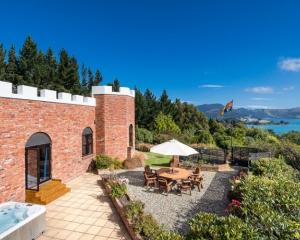
Dunedin is bucking a national trend, as investors seek residential properties to buy, as rentals for families.
South of Waitaki, nearly all of the southern housing areas are well above the national average of 5.1% growth, compared with Quotable Value data from July last year. Only Gore's 2.6% growth is below the national average.
Low to mid-value houses across the country, including Dunedin, were selling at a faster rate, due to continued demand from first-home buyers, QV general manager David Nagel said.
''Our analysis shows most property transactions are taking place at the low-to-medium price bracket, a section of the market where value growth remains comparatively strong, despite relatively static average house values across the country,'' he said.
QV's Dunedin-based property consultant Tim Gibson said the rate of value growth had dropped and quarterly growth rates were well below the annual growth rates.
''We believe this is mostly to do with the usual winter slowdown and a period of consolidation after a sustained period of growth,'' he said.
However, Mr Gibson said low-to-mid value properties continued to attract plenty of demand.
There were reports this week of investors selling former university rentals to new home buyers in Dunedin, rather than upgrading to new insulation standards by next July.
Mr Gibson said beyond the university area, there was increasing investor interest for residential homes to use as rentals; citing lifestyle properties on offer, near the central business district or beaches of Dunedin.
''Investor activity remains relatively high and it continues to grow, which is different to most areas in New Zealand, which are experiencing a drop in investor activity.
''We believe this is due to relatively low values,'' Mr Gibson said.
First-home buyers were also playing a part, buying into the $200,000-$400,000 bracket, too, he said.
Dunedin continues to buck the trend, with investors accounting for a growing portion of buyers, according to the latest CoreLogic buyer classification data.
Given an average house value of $411,669, investors were attracted by the relatively low values and strong rental yields.
''Investor activity has dropped over most our main centres, partly due to the banks' LVR [loan to value ratio] restrictions and a period of consolidation after recent growth,'' CoreLogic said.
Mr Nagel first home buyer activity remained ''relatively strong'' across most of New Zealand although there was a drop in activity in some areas during the past few months.
''This could possibly be due to the fact that some buyers are holding off purchasing, hoping they'll attain a KiwiBuild property in the ballot,'' he said.
QV would be ''closely monitoring'' the impact of the government's initiative over coming months, but Mr Nagel said its full impact would not be felt for some time yet.
He said around the South Island, as anticipated, the winter chill had a major impact, with quarterly growth significantly below annual growth rates across many regions.












